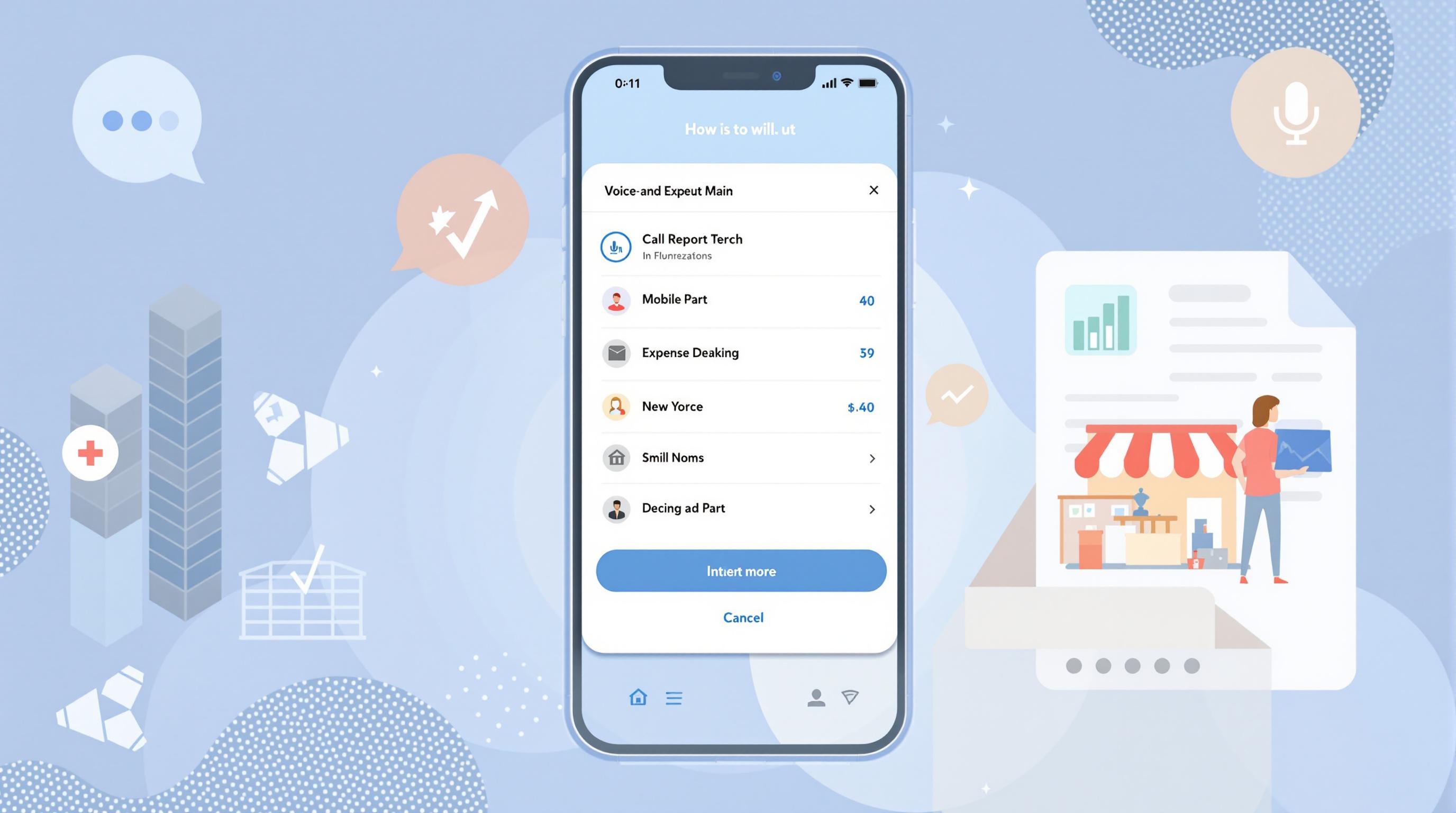Related Articles
- How Mobile Accounting Influences Entrepreneurial Mental Health and Work-Life Balance in Gig Economies
- The Quiet Costs: How Mismanaged Time Data Quietly Undermines Small Business Growth and Decision Making
- Top 5 Trailblazing AI-Powered Financial Reporting Apps Revolutionizing Accuracy and Speed Since 2019
- How Behavioral Economics Shapes Decision-Making in Financial Record Matching and Discrepancy Resolution
- How Subtle Shifts in Supplier Relationships Secretly Affect Your Company's Financial Health and Liquidity Balance
- Top 6 Payroll Solutions Born in the Last Five Years That Are Quietly Taking the Gig Economy by Storm
Top 6 Next-Gen Mobile Accounting Apps Launched Since 2019: Comprehensive Review and Buyer’s Guide
Top 6 Next-Gen Mobile Accounting Apps Launched Since 2019: Comprehensive Review and Buyer’s Guide
Top 6 Next-Gen Mobile Accounting Apps Launched Since 2019: Comprehensive Review and Buyer’s Guide
In today’s fast-paced business environment, mobile accounting apps have evolved significantly. Since 2019, a wave of next-generation accounting applications has surged into the market, incorporating innovative features to meet the demands of freelancers, small business owners, and accountants alike. These apps emphasize automation, cloud connectivity, and AI-powered insights to streamline financial management directly from smartphones and tablets.
Choosing the right app can be overwhelming due to varied features, pricing plans, and targeted user base. This article reviews six top-tier next-gen mobile accounting apps launched since 2019, highlighting their unique capabilities and helping readers make an informed decision based on business needs. Whether you want to optimize invoicing, track expenses, or gain deeper financial analytics, these tools represent the cutting edge of mobile accounting technology.
Alongside the reviews, a buyer’s guide section will provide key considerations like budget, integration needs, user experience, and customer support, ensuring that readers not only understand which apps are most promising but also how to pick the best fit for their operations. Let’s dive into the details of these innovative solutions reshaping mobile financial management.
1. FreshBooks Mobile (Launched 2020)
FreshBooks Mobile, an extension of the venerable FreshBooks cloud accounting platform, launched a completely revamped app in early 2020 to better serve freelancers and small business owners. The app emphasizes ease of use with a minimalist interface that allows users to manage invoices, track time, and monitor expenses on the go.
This version brought AI-powered expense categorization and automated recurring invoicing, which significantly reduces manual data entry. It also integrates seamlessly with popular payment gateways such as Stripe and PayPal, making it easier for clients to pay invoices directly through their phones.
According to FreshBooks official documentation, this mobile app syncs in real-time with desktop versions, ensuring data consistency across devices (FreshBooks, 2020). This cross-platform capability is ideal for users who switch between office and mobile environments frequently.
2. QuickBooks Online Mobile (Enhanced 2019)
QuickBooks Online Mobile received a major overhaul in 2019 introducing next-generation features aimed at small- to medium-sized businesses. The update prioritized smart reports and AI-driven cash flow prediction tools directly within the app.
Users can now upload receipts via camera, automatically match expenses to bank transactions, and access customizable financial dashboards. These dashboards allow businesses to visualize profit and loss trends, outstanding invoices, and expenses from their mobile devices effortlessly.
Intuit’s annual report highlighted that over 7 million users actively use QuickBooks mobile, supported by robust integration with over 600 third-party business apps (Intuit, 2021). This widespread ecosystem is an important advantage for companies relying on comprehensive software suites beyond just accounting.
3. Xero Mobile (Revamped 2019)
Xero’s 2019 mobile app revamp marked a significant leap forward in mobile accounting technology. It improved navigation speed and introduced a refined invoicing system tailored for on-the-go professionals. The app supports multi-currency invoicing, ideal for businesses with international clients.
The app also incorporates bank reconciliation directly from the phone, using automation to suggest matches between bank transactions and invoices or bills, thus easing one of the more tedious accounting processes. Push notifications keep users informed about invoice status changes in real-time.
Xero's press release notes the app's accessibility improvements that benefit users with disabilities, highlighting a commitment to inclusive design (Xero, 2019). This sensitivity makes Xero a strong contender for businesses valuing usability across diverse teams.
4. Zoho Books Mobile (Launched 2020)
Zoho Books launched its dedicated mobile app in 2020 with enhanced features aimed at powering end-to-end bookkeeping for small enterprises. Its intuitive UI provides real-time syncing of transactions, comprehensive project tracking, and tax compliance modules.
One standout feature is the built-in AI assistant “Zia,” which helps interpret financial data, gives invoice reminders, and recognizes anomalies in expense reports. This proactive approach helps avoid accounting errors and late payments.
Integration with Zoho’s broader business suite, including CRM and inventory modules, enables seamless operational workflows, making it an attractive choice for Zoho ecosystem users. Industry analysts praise Zoho Books for offering competitive functionality at an affordable price point (TechCrunch, 2020).
5. Wave Mobile App (Enhanced 2019)
Wave's mobile app enhancement in 2019 improved its free accounting solution’s usability on smartphones, focusing on startups and freelancers seeking cost-effective tools. Despite being free, it includes professional-grade features like invoicing, receipt scanning, and bank account syncing.
The app utilizes cloud storage to back up all data automatically, offering peace of mind for users wary of data loss or device failures. Its expense tracking and report generation features are particularly useful for tax preparation purposes.
Though lacking some advanced features found in paid competitors, Wave maintains popularity as a budget-friendly option with a straightforward interface, regularly recommended by accounting advisors for micro-business owners (CPA Practice Advisor, 2021).
6. Sage Business Cloud Accounting Mobile (Updated 2020)
Sage's Business Cloud Accounting app got a significant update in 2020 emphasizing automation and AI. It improves invoice management with features like auto-reminders and credit notes accessible directly from the app. The update introduced expense capture via photo and automatic categorization via machine learning techniques.
The app also features improved cash flow insights powered by predictive analytics, helping small business owners plan ahead effectively. Multi-user collaboration is supported, enabling accountants and business owners to work simultaneously in real-time.
According to Sage’s product release notes, security enhancements including biometric login and end-to-end encryption accompany the new functionalities, addressing growing data privacy concerns (Sage, 2020). This enhances user confidence in mobile financial management.
Buyer’s Guide: Key Features to Consider
When selecting a next-generation mobile accounting app, businesses should prioritize automation capabilities such as AI-driven expense categorization and invoice reminders. These features save valuable time by reducing manual data input and minimizing errors.
Integration with other financial and business tools is another critical factor. Apps like Zoho Books that integrate deeply with CRM and inventory systems can significantly streamline workflows, reducing administrative overhead.
User experience and interface design should also weigh heavily in decision-making. Intuitive and fast apps enhance productivity and reduce the learning curve, particularly for users who are not accounting experts.
Buyer’s Guide: Pricing and Scalability
Cost considerations will vary widely depending on business size and required features. Free options like Wave can be sufficient for freelancers and micro-businesses, while growing companies may prefer tiered subscription models offered by QuickBooks or FreshBooks to access advanced functionality.
Scalability is another important aspect, as some apps scale better with user count or transaction volume. Apps integrated with large ecosystems (QuickBooks, Zoho) often provide smoother transition paths as businesses grow and require more complex reporting or multi-user collaboration.
Carefully review the pricing plans for mobile-specific functionalities, as some apps segment features by platform or charge additional fees for premium mobile tools, which might impact the total cost of ownership.
Buyer’s Guide: Security and Support
Mobile accounting apps handle sensitive financial data, necessitating robust security protocols such as encryption, two-factor authentication, and biometric access controls. Sage and FreshBooks, for example, include biometric login features enhancing mobile security.
Customer support availability, including live chat, phone support, and community forums, is vital, especially for users new to mobile accounting software. Responsive support can reduce downtime during critical accounting periods like tax season.
Reviewing vendor reputation and update frequency offers insight into long-term reliability. Frequent updates addressing bugs, security patches, and feature enhancements indicate an actively supported product.
Conclusion
The mobile accounting landscape since 2019 has been transformed by apps that leverage AI, cloud technology, and user-centric design to empower businesses to handle accounting tasks anytime, anywhere. The reviewed apps—FreshBooks, QuickBooks Online, Xero, Zoho Books, Wave, and Sage Business Cloud Accounting—offer diverse features tailored for different business sizes and needs.
Selecting the right app requires balancing automation, integration, user experience, price, and security considerations. Armed with this comprehensive review and buyer’s guide, businesses can confidently choose a next-gen mobile accounting app that will enhance financial management and support growth in the digital age.
For further reading and detailed feature comparisons, consult official vendor websites and recent industry reports. Staying updated on new launches and updates will help maintain an efficient, future-proof accounting system.




